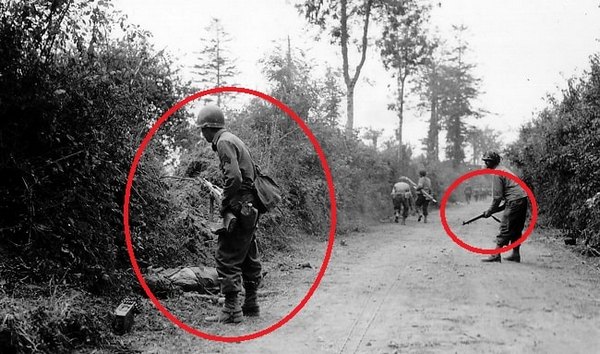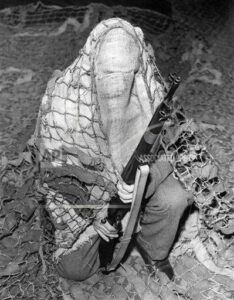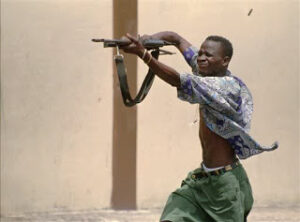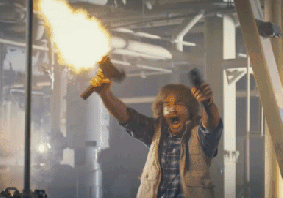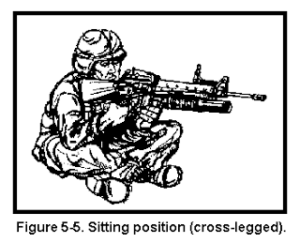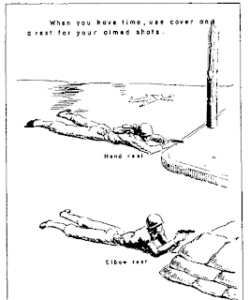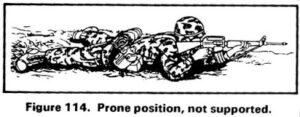A friend of mine was reading about the training of conscripts in Taiwan. He referenced some of the articles I have written about making training more relevant. These include my blog on the “Murray System” and the book that derived from it, my book “Crash Combat”.
Crash Combat is about unarmed and non-firearm combat. For a more generic training program, where would I start?
Probably, near the start, would be an introduction to practical use of the rifle, taught in several phases:
Introduction Phase
• Basic safety and orientation.
• Perceive, Recognize, Engage.
• Load, unload and clearing.
• Anatomy for shooters: The Lethal T, the belt-buckle aim and the armpit line.
No one goes past the introduction phase until the instructor is convinced all students are competent and mature in their handling of firearms and their behaviour on the range and training areas.
Phase One
This phase teaches shooting from behind cover, from various positions.
It ingrains the habit of always using available cover, while teaching shooting posture fundamentals.
Start with prone position and move on to other positions such as kneeling, sitting and squatting.
Key points:
• Fire around rather than over cover when possible. Observation should also be conducted keeping low and looking around rather than over.
• Keep low. Never be reluctant to get close to the dirt.
• Always use cover when possible.
• Use cover when reloading and clearing stoppages.
• What parts of a gun should not to rest in contact with hard cover when firing? Answer is any part except the fore-end or bipod.
• Includes a section on correct techniques to use when firing from windows.
Phase one is conducted with half-silhouette targets of various sizes, engaged at relatively short ranges, such as 20 to 50 metres. Sights zeroed to 200 metres are used for all shooting.
Head-sized 15 x 25 cm oval shapes printed on A4 sheets may be used as targets instead.
Emphasis in this phase is on building the student’s confidence in their shooting while teaching good shooting postures and tactical positions.
There are no scores, shots being judged as either hits or misses. Reactive targets that make a noise, fall or flash a light when hit will prove useful.
Phase Two
Phases two is dry firing. It is effectively “kata for guns”, or “tai chi with triggers”.
As recommended by Elliot, students practice mounting their rifle to bring it smoothly up to firing position. This is practised in the various postures learnt in phase one.
Mounting is combined with tracking, breathing and trigger exercises:
• Tracking involves keeping a mounted weapon moving to pursue, swing through and lead a moving target.
• Breathing involves synchronizing the respiratory cycle with the moment of firing to minimize unintended movement of the weapon.
• Trigger exercise is developing a trigger “press” that causes minimum displacement of the barrel.
Phase Three
Phase three is Quick Kill training.
Airguns/airsoft guns with the sights removed are used to engage small thrown targets. This builds on the instinctive pointing and tracking skills developed in phase two.
Phase three teaches effective engagement skills for situations when there is insufficient time to align sights or when sights are not visible.
Phase Four
Introduction to room-clearing techniques.
The likelihood of operations in urban terrain means a familiarity with room clearing must become a fundamental skill-set of any firearm user.
• Shooting on the move and while sidestepping.
For safety, phase four may be practised with airsoft weapons.
Phase Five
Phase five is a repeat of phase one, but the engagement range is increased up to 250 metres.
Students may be required to crawl to a firing position, or use other appropriate modes of tactical movement.
Target shooting, long-range shooting, volley fire and other fields can be taught later. Soldiers with an aptitude for these disciplines can be encouraged accordingly.
The five phases are designed to quickly produce riflemen that can respond quickly and accurately against threats that occur within likely engagement ranges and terrain.






